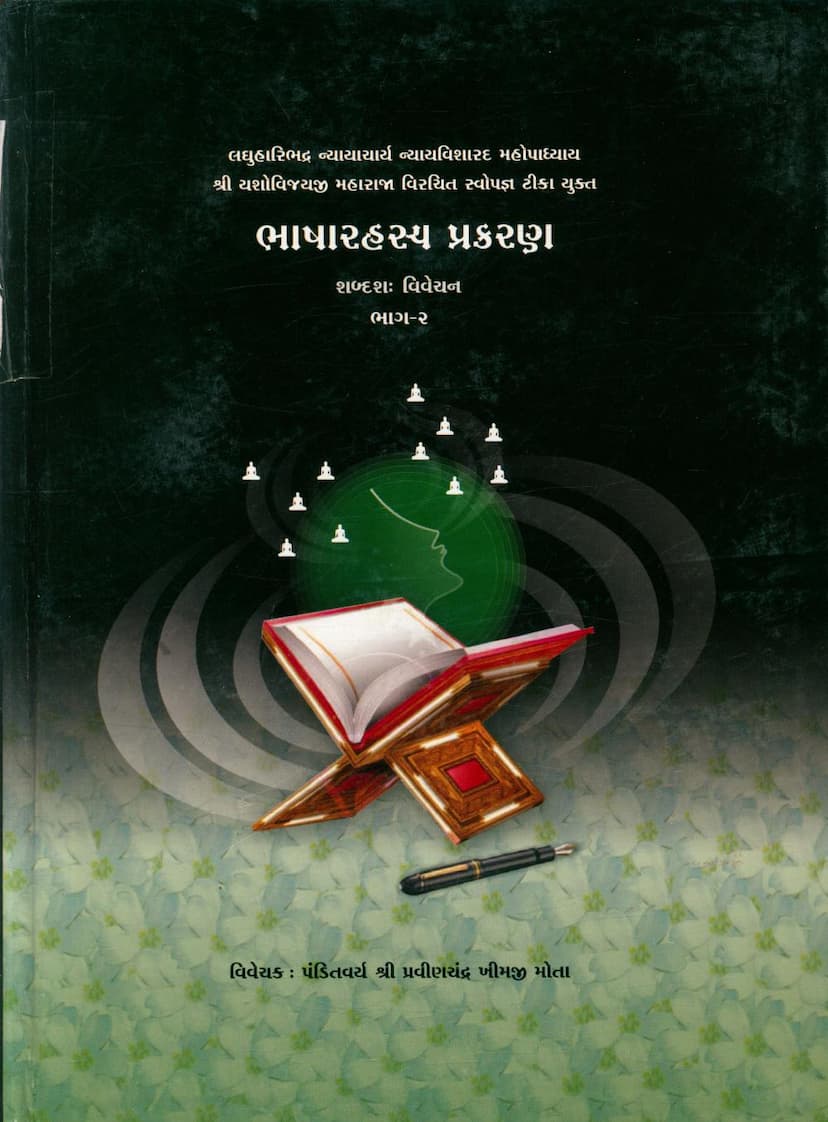Bhasha Rahasya Prakaran Part 02
Added to library: September 1, 2025

Summary
This document is the second part of the commentary on "Bhasha Rahasya Prakaran" (The Mystery of Speech), originally authored by Upadhyay Shri Yashovijayji Maharaj and commented upon by Pandit Shri Pravinchandra Khimji Mota. Published by Gitarth Ganga, this volume focuses on verses 38 to 101 of the original text.
The book is a detailed analysis of the Jain perspective on speech, exploring its nuances, types, and ethical implications, particularly for ascetics.
Here's a breakdown of the key themes and content:
Core Concept: The text delves into the Jain understanding of speech (Bhasha) as presented in the "Bhasha Rahasya Prakaran." It classifies speech based on its nature, intention, and impact, particularly emphasizing the principles of Vachangupti (control over speech) and Bhashasamiti (carefulness in speech) for Jain monks.
Key Classifications of Speech: The book extensively discusses various classifications of speech as outlined in Jain scriptures, often referencing specific verses (Gathas). These include:
-
Four Types of Speech (Dravya Bhasha):
- Satya (Truthful): Speech that is accurate and beneficial.
- Asatya (Untruthful): Speech that is false.
- Satyamrisha (Mixed Truth and Untruth): Speech that contains elements of both truth and untruth.
- Asatyamrisha (Neither Truth nor Untruth): Speech that falls outside the direct categories of truth and untruth.
-
Sub-classifications: The text meticulously breaks down these broad categories into numerous sub-types based on the underlying emotions (kashayas like anger, pride, deceit, greed, passion, aversion, laughter, fear), intentions (causing harm, deception), and nature (vague, precise). For example, Asatya speech is divided into ten types, influenced by anger, pride, etc. Satyamrisha speech is also detailed with ten sub-types based on mixtures of truth and falsehood in different aspects. Asatyamrisha speech is further elaborated with twelve specific types like Aamantranin (invitational), Aadnyapani (commanding), Yachani (requesting), etc.
-
Bhav Bhasha (Mental/Intentional Speech): Beyond the gross physical expression of speech, the text discusses Shrut Bhav Bhasha (speech influenced by scriptural knowledge) and Charitra Bhav Bhasha (speech influenced by conduct and character).
Ethical Guidelines for Monks: A significant portion of the text is dedicated to outlining the specific conduct expected of Jain monks regarding speech. This includes:
- Prohibited Speech: Monks are advised against using speech that is vague, misleading, rooted in flawed intentions, or causes harm. This includes gossip, harsh words, excessive praise or criticism, and speech that might incite others to harmful actions.
- Permissible Speech: Speech should be truthful, appropriate for the occasion, beneficial, and spoken with mindful intent (Vachangupti). It should be aimed at spiritual upliftment and should not be used for worldly gains or personal attachments.
- Contextual Appropriateness: The text emphasizes the importance of context and intention. Even seemingly truthful statements can become problematic if uttered with an inappropriate intention or at the wrong time, potentially leading to harm or misunderstanding.
Philosophical Underpinnings: The book draws upon Jain philosophy to explain these principles. It discusses how speech is an action (karma) and how its nature (truthful, untruthful, mixed) affects spiritual progress (nirjara) and attachment (bandha). The underlying principle is that speech, like all actions, should ultimately contribute to the liberation from the cycle of birth and death (moksha).
Structure and Commentary:
- The book is a "Shabdasha Vivechan" (word-by-word commentary) on the original verses.
- It includes explanations of the verses' meaning in Gujarati, along with the original Sanskrit/Prakrit verses.
- The commentary aims to make the profound spiritual secrets embedded in the original text accessible to a wider audience.
Overall Message: The "Bhasha Rahasya Prakaran Part 02" serves as a comprehensive guide to the ethical and spiritual dimensions of speech within Jainism. It highlights that controlling and purifying speech is a crucial aspect of the spiritual path, leading to purity of character and ultimately to liberation. The detailed breakdown of speech types and the associated ethical guidelines provide practical wisdom for spiritual practitioners.